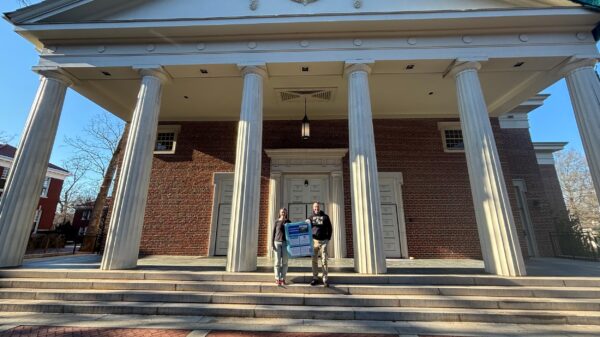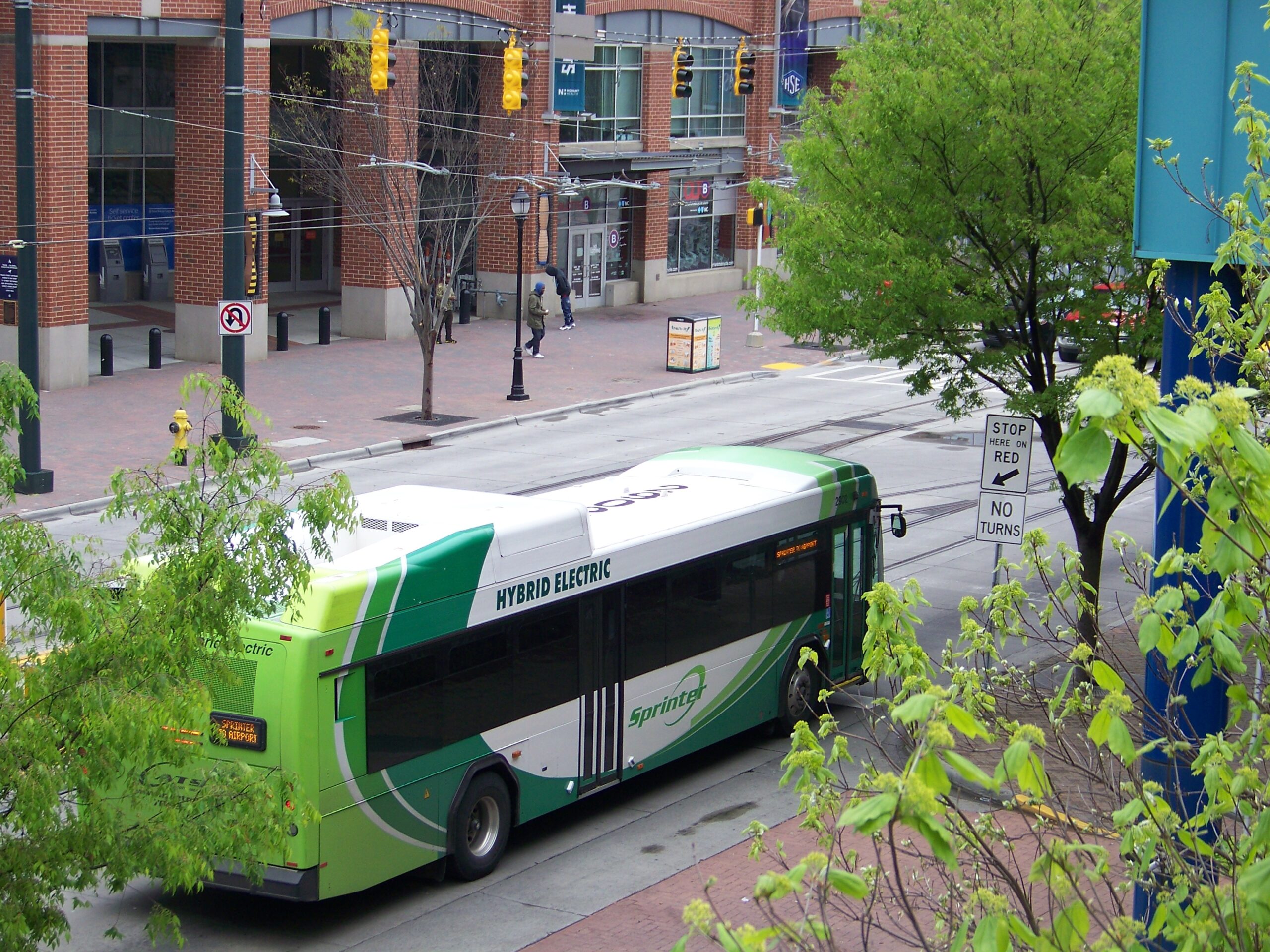Charlotte bus operators fear a recurrence of circumstances that led to the shooting death of bus driver Ethan Rivera, if government officials and residents ignore critical issues with city infrastructure, laws, and behavior.
Rivera, 41, was shot and killed on Feb. 11 in an incident of road rage in uptown Charlotte. Five current and former drivers in the Charlotte Area Transit System recently described the scenario that ended in Rivera’s death, and said it is increasingly familiar to CATS employees.
Bus drivers said narrow streets frequently force them to move their buses into the left lane to avoid hitting telephone poles and to prevent damage to the mirror of their bus. Drivers of other vehicles near the bus often believe this move threatens them. The drivers explained that Rivera’s move to the left is an important factor in a conflict that ended when an enraged driver in a Honda Pilot, 21-year-old Darian Dru Thavychith, shot the driver to death.

Photo by Elvis Menayese, Queens University News Service
“This is not the first operator that’s been shot. This is the first operator that’s been killed on the job,” said Gia Lockhart, a Charlotte resident and eight-year veteran CATS operator. “And honestly, it may not be the last.”
CATS operators are required to pay for damage to the bus mirrors. Since the shooting, solutions have focused on protective shields for drivers and training in de-escalation of tense situations. But drivers say the real problems go deeper.
“We are trained to take up that left lane, if need be, to clear whatever hazards that we need to clear,” said Lockhart. “In Charlotte, we have a lot of telephone poles that are leaning, we have a lot of leaning trees, and limbs. And those things can hit the bus and break the mirror and then we’re punished for it.”
Marcha Rodgers, a former CATS operator who retired immediately after hearing news of Rivera’s death, explained how bus operators take extra safety measures to protect passengers and the bus itself when driving on narrow streets. For example, they signal drivers behind them about their upcoming action. However, because most Charlotte drivers are unaware of the issue, road rage is frequently directed at bus operators.
Street Obstacles for Bus Drivers Are Not New
CATS does not have the authority to remove these hazards, but the transit system has been aware of the problem for years, said Lockhart and Rodgers. CATS has a duty to inform and insist to the city of Charlotte, city and state transportation departments, and Duke Energy, that these hazards need removal, they said.
“Just as easily as they’re building all these new condominiums, and row houses for all these people that are moving to Charlotte,” Lockhart said, “that’s when they’re moving all these poles, when they’re building, building, building. But they’re not expanding the street.”
“They’ll move the infrastructure for a profit, but they won’t move the infrastructure for the peace of mind of the operators. And it’s clearly just another example of the capitalistic societies that we exist in, which means that the bottom line, what dollar, the revenue that comes in is much more important than anything, including the lives of the operators as well as the passengers,” said Nichel Dunlap, a Charlotte resident and former bus operator.
Rodgers has more than 20 years of CATS driving experience, and said Charlotte streets are some of the worst in the world to drive on.
“You can hit a pothole and tear your whole front end off,” said Rodgers. “I drive on the streets, and they’re the worst streets in the world to drive on except for the ones in the nicer neighborhoods. They make sure they’re all taken care of.”
New York City Treats Bus Drivers Better
Driving for CATS is one of the most dangerous jobs in the city, said David Harris, a current CATS operator.
“I did not know when I got hired that this here was one of the most dangerous jobs in Charlotte,” Harris said. “Had I known that I was getting into a job that was really dangerous, I wouldn’t have got this job.”
Tamasa Patterson, a CATS operator for more than a year, is originally from South Carolina but previously worked in the New York City transportation system. In comparison to her experience in New York, she is shocked by how bus operators are treated in Charlotte.
“I’ve never had the problems I have here. Never,” Patterson said. “Because they [in New York] have rules, and they stick by their drivers.” Once other drivers and passengers know the rules, they don’t act up, she said.
In North Carolina, assault on a transit system employee is a misdemeanor. But it’s a felony in many states, including Connecticut, Delaware, Missouri, Oklahoma, Rhode Island, Utah and Washington. Rodgers said North Carolina needs a stronger law.
“As long as the public is aware that, hey, they’re not going to back us, they’re not going to make sure we are saved by having that protection shield or making sure we have police presence,” Rodgers said. “And the laws have to be changed to where if we are assaulted, it is a felony.”
Bus Drivers Want the Respect Light Rail Drivers Get
Patterson said she and other bus operators feel that they don’t receive the same respect and care as the train operators of the city’s LYNX Blue Line light rail system.
“They don’t respect the bus drivers. They respect the train drivers,” Patterson said. “The train doesn’t move this city, we move this city. The train goes north and south. We go all over. If the train stopped tomorrow, we will still be running, and these people will get to work from us.”
Demand for bus transportation is high among passengers, and there is a shortage of CATS bus drivers. Current drivers work in fear for their lives, the operators said, and this is causing the shortage. Harris said CATS regularly asks drivers to work extended hours but is unable to keep them safe.
“Every day they’re asking us, ‘Will we stay over and help?’ Every day, they’re calling us on our day off and asking us, ‘Would you come in and help us?,’” said Harris. “It seems like they would get the message that we’re afraid, make some changes and you wouldn’t have this problem.”
As the city considers adjustments to address the safety of bus operators, the CATS drivers are seeking safer career paths. Training classes for new drivers that used to have 20 students now have three, the operators said.
“I loved my job when I first started, eight years ago. Now I just tolerate it,” said Lockhart. “My children – I have three daughters, ages 23, soon to be 16 and 9 – have asked me all the time to find other means of work. Because they want to see their mother come home at night.”
Queens University News Service
-
Elvis Menayese (Author)
Elvis Menayese of Cardiff, Wales, is a 2022 graduate of the James L. Knight School of Communication. Elvis majored in multimedia storytelling with a journalism concentration, and in English literature. He was a Knight summer scholar with the news service in 2021, and also competed as an athlete on the Queens soccer team.
View all posts

































